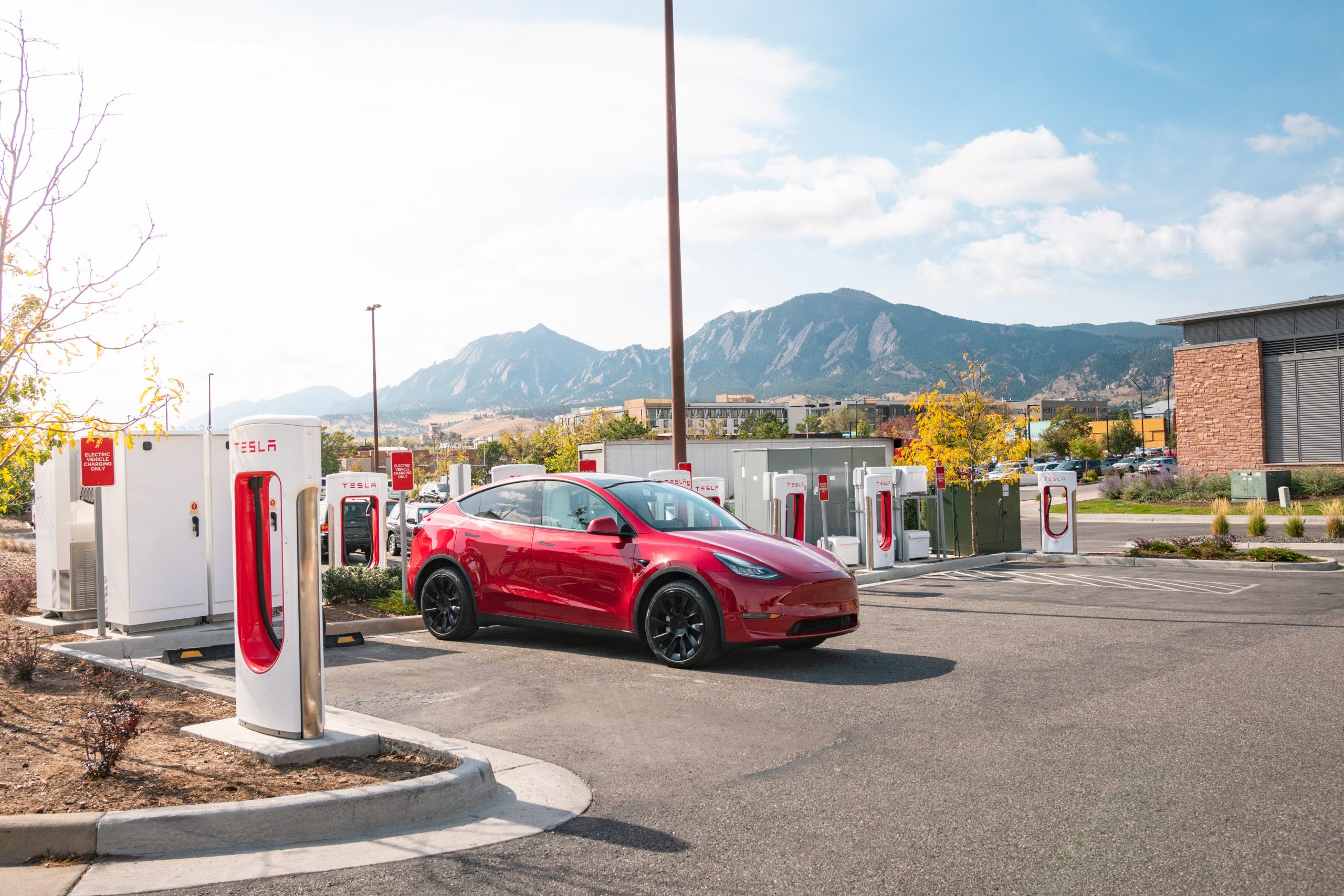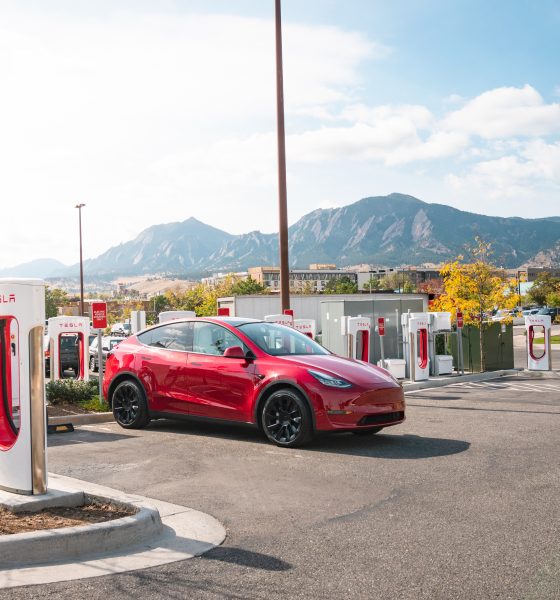

News
Tesla Supercharging times have reduced by one-third in just five years
Tesla Supercharging times have reduced by one-third in just five years, the company said, as its efforts to alleviate false narratives related to elongated charging sessions have improved thanks to technological advancements.
Tesla’s Supercharger Network is already the most robust in the industry, and its tech is arguably the best out there. In terms of dependability, we seldom hear that a Tesla Supercharger is out of order, and if it is, it could be due to routine service or updates.
RELATED:
Tesla declines funding to build massive Superchargers due to payment options
Other EV charging companies have not been able to match the expansion or dependability of Tesla’s Superchargers, and it’s one of the key reasons consumers flock to its vehicles over competitors.
Tesla revealed this morning that its Supercharging times had been reduced by 30 percent over the past five years, and this is despite the mass adoption of EVs over that time.
The Model 3 was introduced just one year earlier and basically triggered Tesla into the hypothetical stratosphere in terms of becoming the first brand to truly offer a widely affordable and effective electric model. Of course, there were precursors before it, like the Chevrolet Bolt, for example.
Tesla defined six main reasons for its reduction in Supercharger times:
- Transition to the V3 Supercharger
- Efficient Routing with Trip Planner
- Supercharger Density Increasing
- Vehicle Efficiency
- Battery Pre-Heating
- Customer Education
These six factors have all contributed to the reduction in Supercharging times in different ways.
Over the last 5 years, we’ve unlocked 30% faster charge times through a combination of hardware, software & customer education pic.twitter.com/FZFoS85pBN
— Tesla (@Tesla) March 14, 2023
The V3 Superchargers were unveiled in 2019 and enabled charging speeds of up to 250 kW, or 1,000 miles of range in an hour, but only in ideal conditions. This alone has contributed to shorter wait times, but there are a variety of other factors that Tesla seems to believe were more crucial.
Tesla is already moving past V3 and moving to V4, which will be even faster than the previous iteration of Supercharger. The first installations are already underway in Europe and seem to support the introduction of non-Tesla EV charging with longer cables.
Tesla V4 Superchargers unveiled in Europe, could launch this month
Tesla emphasized the importance of the Trip Planner, which has helped cut wait times in half since 2019, the automaker said.
Using real-time vehicle & site data, Trip Planner routes vehicles to available sites & away from crowded sites.
This has helped cut wait time in half since 2019! pic.twitter.com/NS9foC0Fkl
— Tesla (@Tesla) March 14, 2023
The Trip Planner feature helps drivers visit Superchargers along a route that would help them get from Point A to Point B in the most efficient manner possible.
This doesn’t require elongated waits at Superchargers but relatively short stints at various charging stations that help make a drive faster and wait times less of a hassle.
Tesla has also placed a distinct focus on expanding the Supercharger Network over the past several years and expanded from 31,498 connectors in 2021 to 42,419 in 2022, a 35 percent increase.
Other tech has undoubtedly contributed to the reduction in Supercharger times, but the important thing is that the misconceptions regarding EV charging are being debunked.
While it is still not a five or ten-minute task to charge an EV in today’s age, there is also the option of Home Charging, which gives people the option to wake up every morning to a full charge.
I’d love to hear from you! If you have any comments, concerns, or questions, please email me at joey@teslarati.com. You can also reach me on Twitter @KlenderJoey, or if you have news tips, you can email us at tips@teslarati.com.

News
Tesla China delivery centers look packed as 2025 comes to a close
Needless to say, it appears that Tesla China seems intent on ending 2025 on a strong note.

Tesla’s delivery centers in China seem to be absolutely packed as the final days of 2025 wind down, with photos on social media showing delivery locations being filled wall-to-wall with vehicles waiting for their new owners.
Needless to say, it appears that Tesla China seems intent on ending 2025 on a strong note.
Full delivery center hints at year-end demand surge
A recent image from a Chinese delivery center posted by industry watcher @Tslachan on X revealed rows upon rows of freshly prepared Model Y and Model 3 units, some of which were adorned with red bows and teddy bears. Some customers also seem to be looking over their vehicles with Tesla delivery staff.
The images hint at a strong year-end push to clear inventory and deliver as many vehicles as possible. Interestingly enough, several Model Y L vehicles could be seen in the photos, hinting at the demand for the extended wheelbase-six seat variant of the best-selling all-electric crossover.
Strong demand in China
Consumer demand for the Model Y and Model 3 in China seems to be quite notable. This could be inferred from the estimated delivery dates for the Model 3 and Model Y, which have been extended to February 2026 for several variants. Apart from this, the Model Y and Model 3 also continue to rank well in China’s premium EV segment.
From January to November alone, the Model Y took China’s number one spot in the RMB 200,000-RMB 300,000 segment for electric vehicles, selling 359,463 units. The Model 3 sedan took third place, selling 172,392. This is quite impressive considering that both the Model Y and Model 3 are still priced at a premium compared to some of their rivals, such as the Xiaomi SU7 and YU7.
With delivery centers in December being quite busy, it does seem like Tesla China will end the year on a strong note once more.
News
Tesla Giga Berlin draws “red line” over IG Metall union’s 35-hour week demands
Factory manager André Thierig has drawn a “red line” against reducing Giga Berlin’s workweek to 35 hours, while highlighting that Tesla has actually increased its workers’ salaries more substantially than other carmakers in the country.

Tesla Giga Berlin has found itself in a new labor dispute in Germany, where union IG Metall is pushing for adoption of a collective agreement to boost wages and implement changes, such as a 35-hour workweek.
In a comment, Giga Berlin manager André Thierig drew a “red line” against reducing Giga Berlin’s workweek to 35 hours, while highlighting that Tesla has actually increased its workers’ salaries more substantially than other carmakers in the country.
Tesla factory manager’s “red line”
Tesla Germany is expected to hold a works council election in 2026, which André Thierig considers very important. As per the Giga Berlin plant manager, Giga Berlin’s plant expansion plans might be put on hold if the election favors the union. He also spoke against some of the changes that IG Metall is seeking to implement in the factory, like a 35-hour week, as noted in an rbb24 report.
“The discussion about a 35-hour week is a red line for me. We will not cross it,” Theirig said.
“(The election) will determine whether we can continue our successful path in the future in an independent, flexible, and unbureaucratic manner. Personally, I cannot imagine that the decision-makers in the USA will continue to push ahead with the factory expansion if the election results favor IG Metall.”
Giga Berlin’s wage increase
IG Metall district manager Jan Otto told the German news agency DPA that without a collective agreement, Tesla’s wages remain significantly below levels at other German car factories. He noted the company excuses this by referencing its lowest pay grade, but added: “The two lowest pay grades are not even used in car factories.”
In response, Tesla noted that it has raised the wages of Gigafactory Berlin’s workers more than their German competitors. Thierig noted that with a collective agreement, Giga Berlin’s workers would have seen a 2% wage increase this year. But thanks to Tesla not being unionized, Gigafactory Berlin workers were able to receive a 4% increase, as noted in a CarUp report.
“There was a wage increase of 2% this year in the current collective agreement. Because we are in a different economic situation than the industry as a whole, we were able to double the wages – by 4%. Since production started, this corresponds to a wage increase of more than 25% in less than four years,” Thierig stated.
News
Tesla is seeing a lot of momentum from young Koreans in their 20s-30s: report
From January to November, young buyers purchased over 21,000 Teslas, putting it far ahead of fellow imported rivals like BMW and Mercedes-Benz.

Tesla has captured the hearts of South Korea’s 20s-30s demographic, emerging as the group’s top-selling imported car brand in 2025. From January to November, young buyers purchased over 21,000 Teslas, putting it far ahead of fellow imported rivals like BMW and Mercedes-Benz.
Industry experts cited by The Economist attributed this “Tesla frenzy” to fandom culture, where buyers prioritize the brand over traditional car attributes, similar to snapping up the latest iPhone.
Model Y dominates among young buyers
Data from the Korea Imported Automobile Association showed that Tesla sold 21,757 vehicles to the 20s-30s demographic through November, compared to BMW’s 13,666 and Mercedes-Benz’s 6,983. The Model Y led the list overwhelmingly, with variants like the standard and Long Range models topping purchases for both young men and women.
Young men bought around 16,000 Teslas, mostly Model Y (over 15,000 units), followed by Model 3. Young women followed a similar pattern, favoring Model Y (3,888 units) and Model 3 (1,083 units). The Cybertruck saw minimal sales in this group.
The Model Y’s appeal lies in its family-friendly SUV design, 400-500 km range, quick acceleration, and spacious cargo, which is ideal for commuting and leisure. The Model 3, on the other hand, serves as an accessible entry point with lower pricing, which is valuable considering the country’s EV subsidies.
The Tesla boom
Experts described Tesla’s popularity as “fandom culture,” where young buyers embrace the brand despite criticisms from skeptics. Professor Lee Ho-geun called Tesla a “typical early adopter brand,” comparing purchases to iPhones.
Professor Kim Pil-soo noted that young people view Tesla more as a gadget than a car, and they are likely drawn by marketing, subsidies, and perceived value. They also tend to overlook news of numerous recalls, which are mostly over-the-air software updates, and controversies tied to the company.
Tesla’s position as Korea’s top import for 2025 seems secured. As noted by the publication, Tesla’s December sales figures have not been reported yet, but market analysts have suggested that Tesla has all but secured the top spot among the country’s imported cars this year.








